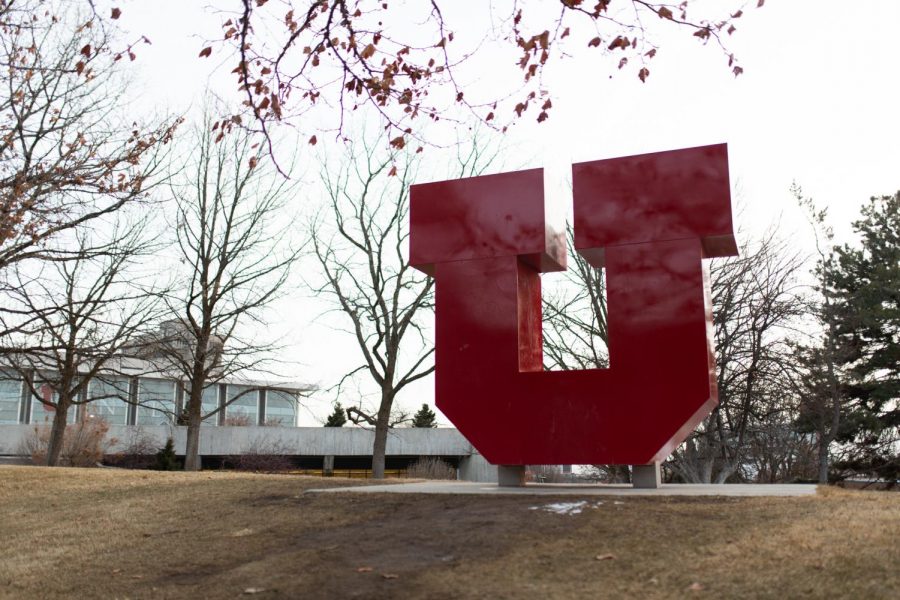Understanding the U’s Response to Zhifan Dong’s Death
Evening on University of Utah campus, Thursday in Salt Lake City. (Photo by Maya Fraser | The Daily Utah Chronicle)
August 6, 2022
After a resurgence of media coverage on the murder of 19-year-old University of Utah student Zhifan Dong, the U’s response and subsequently released documents reveal the internal details behind the events surrounding her passing.
In question have been the U’s ability to handle domestic violence situations, prioritize concerning housing reports and ensure effective communication between the U and police departments.
Media Coverage and Response
On July 16, a little over five months after Dong’s passing, the Daily Utah Chronicle released a report highlighting the experience of Bailey McGartland, Dong’s roommate, in regards to her death and its surrounding investigation. McGartland outlined a timeline of the reported abuse of Dong prior to her death, recounting how she first learned that there was a domestic violence situation occurring and how she assisted Dong in filing reports regarding her situation.
“I felt so angry,” McGartland said. “It was absolutely preventable.”
Three days later, The Salt Lake Tribune published a report detailing the documents they obtained after a months-long court battle with the U. These documents included police records, Housing and Residential Education wellness checks and other reports made in the month preceding Dong’s death.
The Tribune won an appeal for these documents and gave the U until July 28 to provide access. However, briefly before the Tribune’s report came out, the U released these documents on their own accord, making them publicly available on July 19.
The documents were included in an article released by the U’s communications team. The article also provides a timeline with a list of known interactions with Dong and Haoyu Wang, as well as staff actions related to both students. University president Taylor Randall released a personal letter the same day, discussing his experience being the U’s president during the situation and reflecting on campus safety.
Following the initial coverage of the controversy, national news outlets including The New York Times, NBC News and The Washington Post have published stories on the events surrounding Dong’s death, calling out the U’s admitted “shortcomings.”
Many of these pieces compared the controversy to the death of Lauren McCluskey in 2018, which received a similar amount of mass attention across the country.
What Do the Released Documents Tell Us?
Between police reports, HRE files, and a timeline of actions taken by different parties involved and letters to HRE employees, the documents provide a more detailed picture of what happened on the side of the authorities throughout the events of Dong’s domestic violence situation and her passing.
The police report, which details the assault charge pressed against Wang on Jan. 12, explains that both Dong and Wang stated to Salt Lake City police that they had gotten into a verbal argument at the hotel they were staying at. This argument led to Wang hitting Dong on the head with his hand. While Dong was examined by a medical aid team, Wang was handcuffed, taken to jail and charged with domestic violence assault.
The HRE records released outline multiple points of contact with Dong and Wang. On Jan. 14, Dong called the front desk at the Peterson Heritage Center and spoke with the attendant there, explaining what had happened at the hotel on Jan. 12. She requested a wellness check on Wang, wanting to know if he was okay because she hadn’t heard from him, and reported that he had made suicidal threats. Later that night, housing staff made contact with Dong and spoke to her about the report.
Wellness checks on both Dong and Wang occurred in the following weeks after several failed attempts to make contact via phone and email. It was stated in one of these reports that Dong was not home at the time, but Wang was contacted and said he had a counseling appointment scheduled and that his mental health was beginning to improve.
The tone of the reports began to change on Feb. 8, with a report that details Dong’s roommate’s concern of not having seen Dong in over a week. HRE staff found that Dong’s last U card swipe into the dorms was on Jan. 28. At this point, a missing person’s report was filed with the University Police Department, marking the first time UPD were informed of Dong’s situation. This is the same day that Dong’s roommate Bailey McGartland stated that UPD officers came to her dorm room.
A report written on Feb. 9 confirms Dong’s missing person status and that communication with Dong was made. However, in this report, the last names of Dong and Wang are mixed up. Dong is referred to as Wang when discussing attempts to contact her, while Wang is referred to as Dong when discussing his release from jail and the protective order that instructed him to stay away from Dong.
These HRE reports are accompanied by a detailed timeline created by the U explaining the events leading up to Dong’s death. The timeline elaborates on 25 actions taken over a 29-day period that lasted from Jan. 12 to Feb. 11.
The U also released documentation of disciplinary action and warnings to HRE employees regarding their failure to follow policy. Three letters total were released, two of which included the subject line, “Final Written Warning Notice.” Dated March 11, both of these letters stated that “improvement must be immediate and sustained” and warned that a “similar lapse in judgment” could lead to further disciplinary action in the future.
The letters detail that the recipients failed to follow HRE and University policy by neglecting to report the information given by Dong on Jan. 14 to the U’s Office of Equal Opportunity and Affirmative Action and the U’s Behavioral Intervention Team. The employees also failed to classify the case as a “welfare” issue, which would have involved the police sooner.
The third letter, dated March 18, addresses a member of HRE leadership with a similar acknowledgment of where improvements could be made.
Since these disciplinary letters were sent, two of the three HRE employees have resigned.
What is the U’s Plan Moving Forward?
In his July 19 letter, Randall states the actions being taken by the U as a result of the shortcomings in Dong’s case.
“In addition to holding employees accountable, we have updated and clarified emergency procedures for housing staff; restructured the organizational approach to streamline reporting processes; hired a new housing executive director; refined processes for communications between housing staff and university police; and implemented regular audits of conduct, racism and bias incidents in university-managed housing,” Randall said.
Randall continued to reflect on changes made to safety at the U since 2018, after Lauren McCluskey’s murder.
Dong’s parents have since retained a lawyer, Brian C. Stewart, to “represent them with respect to claims arising from the University of Utah’s failure to take necessary steps to protect Zhifan,” according to a written statement from Stewart.
Stewart is an attorney for Parker & McConkie, the same law firm that represented McCluskey’s family against the U during the aftermath of her murder.
“We trusted the University of Utah with our daughter’s safety, and they betrayed that trust,” Dong’s parents said in a written statement. “They knew Zhifan was in serious danger but failed to protect her when she needed it the most.”
Editor’s note: If you or someone you know is in a domestic violence situation, the UDVC provides 24-hour hotline support and can connect you to the resources you may need. Their hotline is 1-800-897-5465, and the National Domestic Violence Hotline is 1-800-799-7233.








